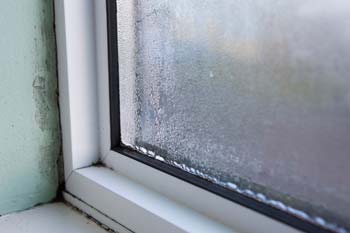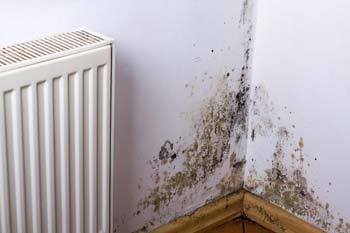
 Many of us wake up to streaming windows, especially in the winter and this is usually one of the first signs that you have a problem. If condensation occurs over a prolonged period of time, other signs will start to appear such as damp patches on walls, peeling wallpaper and ultimately black mould growth.
Many of us wake up to streaming windows, especially in the winter and this is usually one of the first signs that you have a problem. If condensation occurs over a prolonged period of time, other signs will start to appear such as damp patches on walls, peeling wallpaper and ultimately black mould growth.
Houses are becoming more airtight as we try to make our homes more energy efficient. Without a good source of fresh air in your home, condensation and mould problems start to arise which can cause problems to your health and home.
There is nothing more frustrating than spending time, money and effort keeping your home in perfect condition only to be rewarded by the appearance of mould. Unfortunately, mould can appear in any room of the house, it’s not just a problem exclusive to bathrooms it can appear around window frames, behind furniture, on mattresses, walls, floors, ceilings and doors. It can even find its way into your wardrobe and on to your clothing, shoes and bags!
Apart from being unsightly and ruining your decor, there is growing evidence to suggest that it is also bad for your health. It can cause headaches, breathing difficulties as well as nausea and fatigue. What’s more, mould is a recognised allergen and irritant, it has also been identified as a trigger for respiratory problems such as Asthma.

Our trained and specialised experts have experience in condensation issues and one of the most common causes of mould is condensation dampness which our thermal cameras easily detect. Our experts investigate the problem and find an answer to your problems. Surprisingly, it is easy to resolve once you have identified the problem and ruled out any issues with rising or penetrating damp.
Thermal Imaging is the method of using the heat given off by an object to produce an image. Our experts use a Thermal Imaging Carmera which is a tool for recording nearest surface temperatures.
Thermal imaging can identify the energy efficiency of buildings and quickly locate the problem areas such as poor insulation. They quickly find areas of heat loss and moisture intrusion common problems that can lead to cold, drafts and increased condensation.
If condensation occurs over a prolonged period of time, other signs will start to appear such as damp patches on walls, peeling wallpaper and ultimately black mould growth. Soft furnishings and fabrics, including clothes, shoes and bags can become prone to mildew.
Apart from being unsightly and ruining your decor, there is growing evidence to suggest that it is also bad for your health. It can cause headaches, breathing difficulties as well as nausea and fatigue. What’s more, mould is a recognised allergen and irritant, it has also been identified as a trigger for respiratory problems such as Asthma.





